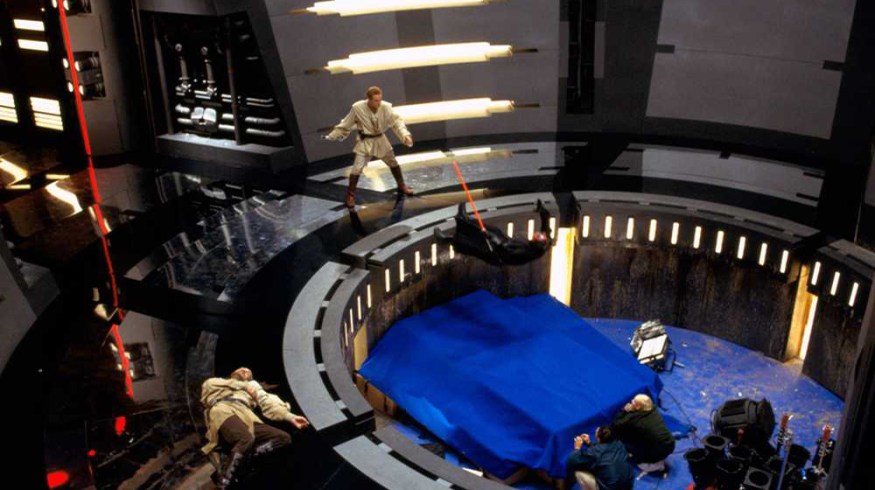
The Iconic Special Effects of the Star Wars Films — Ranked
From the good to the great to the dear-god-please-no, here are the iconic visual effects behind Star Wars ranked — respectfully.
Here in our office, we often play a friendly ranking game called “Top 3/ Bottom 3.” We create a list of our favorite and least favorite three things under a specific topic. So, today the topic was “Star Wars VFX,” and I thought, what a perfect opportunity to dive into a topic nobody can get enough of: Star Wars.
Now, obviously visual effects have progressed over time and are now a common staple of filmmaking. With programs like cinema4D, Blender, Maya, and so on, visual effects become more accessible to filmmakers with each passing year. Some of the best-looking Star Wars films to come out in the past ten years have been fan films.
This is all to say that VFX have gotten better over time, but, for this ranking, let’s consider the technical achievements and innovation as they were at the time of release. (Nobody had ever seen something like Star Wars in 1977 when the first film premiered.) Another aspect to consider is how the directors and VFX artists decided to combine practical and computer-based effects to seamlessly (sometimes not so much) tell these stories we know and love (sometimes not so much). So, with Episode IX right around the corner, let’s look back at the good and the not-so-good.
1. Return of the Jedi
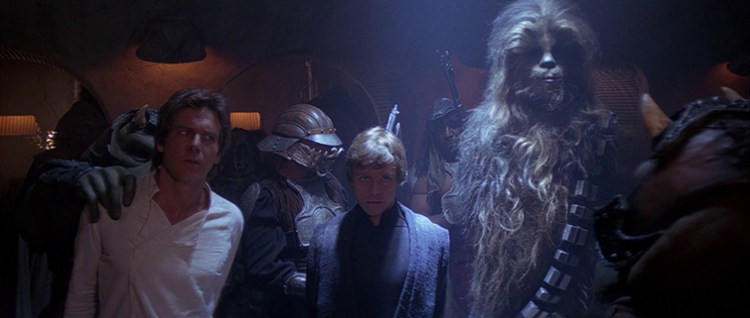
Okay now before you go click out of this article and comment about why I’m wrong, just hear me out. There are several elements to Return of the Jedi that make it an absolute masterclass in special effects that amplify the story and the universe of a franchise already two excellent films deep. The film premiered in 1983, which was just before CGI made its big debut in the ’90s, so you didn’t have the corny, eyesore effects from something like Escape from LA or Dragon Heart; instead, the technology had improved over the previous two films, while sticking to the same aesthetics and creative decisions that had made Lucas’s original a classic.
The visual effects supervisor Richard Edlund had worked on the two previous Star Wars films and came up with the idea to have a hyper-controlled camera capable of recording super-slow captured footage for VFX, into which we’ll get later. But its also worth noting that the inventor of the Steadicam, Garrett Brown, walked the length of “Endor’s forest” shooting at less than a frame-per-second. The filmmakers had tried this method on other Star Wars films for various sequences, but with Return, they perfected it.
I’ll never forget the feeling of watching the opening Sarlacc pit sequence and thinking “Okay, yes — I will rewind immediately and watch this again” (because yes, I wasn’t able to see it in theaters because I hadn’t been born yet). But, I recently went back and watched all three films, and I took the approach of watching them as if I’d never seen another Star Wars movie. Just a purely objective movie-watching experience as if I were a kid in the ’80s. (Yes, I know its not the same, but my perspective on this film specifically was much different this time around.)
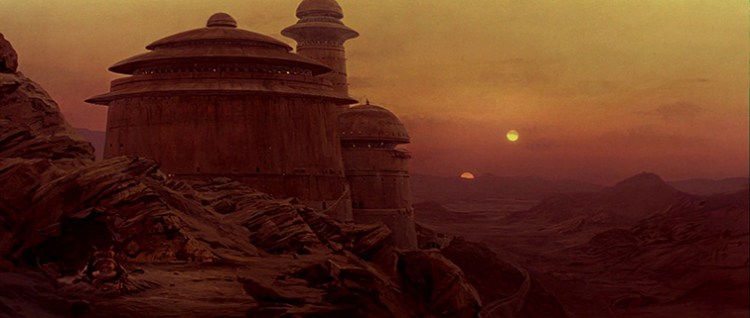
Remember when Luke catches the lightsaber shot by R2D2, turns it on, and the action kicks in on hovering spacecrafts in the middle of Tatooine? The Sarlacc pit itself was a practical effect masterpiece, as was Jabba the Hut, and shall we talk about the Ewoks and Endor in their entirety? The last battle in space is stunning for the time it came out. Plot and story aside, the action sequences and practical effects in Return are some of the franchise’s best.
2. A New Hope
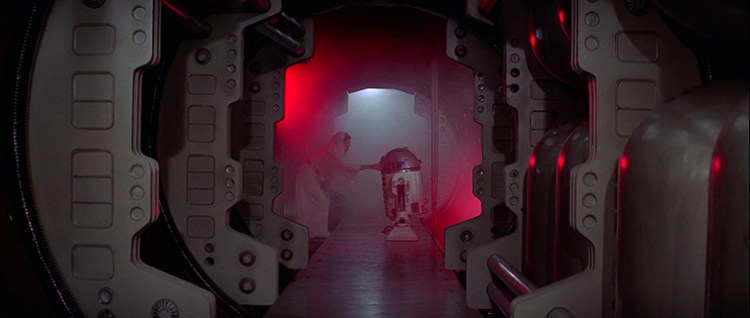
This might seem obvious as a top choice, but the film that started it all did more than innovate technologically. It set the standard for future Star Wars movies. The combined use of visual and practical effects would come to define the aesthetic of good science fiction — all thanks to George Lucas‘s vision, production designer John Berry, and the visual effects gurus John Dykstra and Richard Edlund (whose new company, Industrial Light and Magic, was just getting started).
A combination of matte paintings, miniatures, and an overall perfectionist approach to every part of the film created a life-changing experience for audiences worldwide. It’s also worth noting the cinematography choices made in conjunction with lighting the actors a very specific way. There are a few things they did to create the world of Star Wars — the lighting, the sound design, and rotoscoping the lightsabers — that come directly from the first film’s innovation.
3. Rogue One
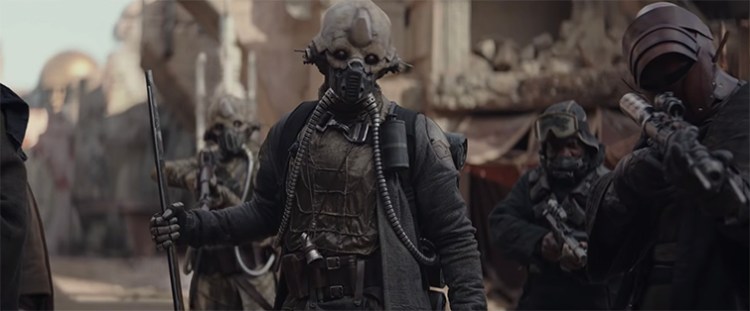
In my opinion (and remember this whole article is just my opinion), Rogue One is visually and aesthetically the most Star Wars-looking film a Star Wars film can be. It’s gritty, it’s not polished at all, and the world really does feel lived in. The blend of practical effects with CGI is almost perfect. The sets are real. The creatures are costumes, and the action feels real because it is. The android and comedic relief of the movie, K-2SO is somewhere in the middle.
Plus, you can thank Rogue One for finally showing us (through another perfect blend of CGI and practical effects) what Vader going full berserk looks like. It feels good and terrifying seeing what he can do with unrestricted body movement.
Another reason for the success here is the fact that director Gareth Edwards used to be a VFX artist himself, and he understands scale and scope in terms of camera placement and how to position actors on camera to build worlds through the audience’s eyes.
4. The Empire Strikes Back
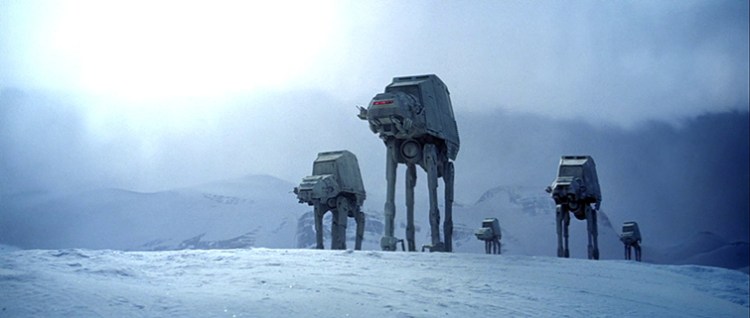
For The Empire Strikes Back, the role of lead VFX supervisor went to Richard Edlund, who created his own “motion-controlled” camera that could roll film at one frame per-second. For sequences like Hoth and other Falcon flying scenes, the technique helped immensely. In fact, here’s a 50-minute behind-the-scenes video of the effects in Empire.
The shot of the AT-ATs approaching in the distance through the snowy mist — chills. Add in the lightsaber battle at the end, and Empire has some of the best sequences in the franchise. It’s a perfect blend of what was possible at the time and what the story called for. Also, the improved rotoscoping of the end battle between Luke and Vader is something to behold.
5. Solo
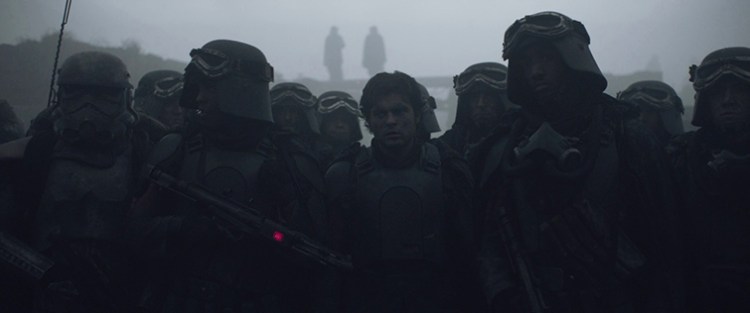
Continuing the streak of recent Star Wars films, Solo has undoubtedly become the most “meh” movie of the franchise in the eyes of its fan base. Personally, I loved it. Not many actually saw it in theaters, and those who did have kind of written off. I think. Am I alone in this? Do people like it? Anyway, one aspect we shouldn’t write off is the effects. The movie kicks things off with a new (all-practical) character, Lady Proxima. It’s a beautiful combination of old school practical effects puppetry and filmmaking wizardry as mystery and monster collide. Another aspect worth noting, the plot itself doesn’t call for gigantic space battles and large-scale effects. The climax is basically a Western heist/shootout. Shot by Bradford Young, Solo follows Rogue One‘s path by keeping the look dark, and grounded.
One of the central characters once the plot kicks in, L3-37 is a combination of practical and CGI- with Phoebe Waller-Bridge actually wearing a costume so the actors had something to react to, as well as organic movements within the scene. Another notable VFX innovation was the Solo team using an underwater explosion element to create a unique bomb explosion.
6. The Force Awakens
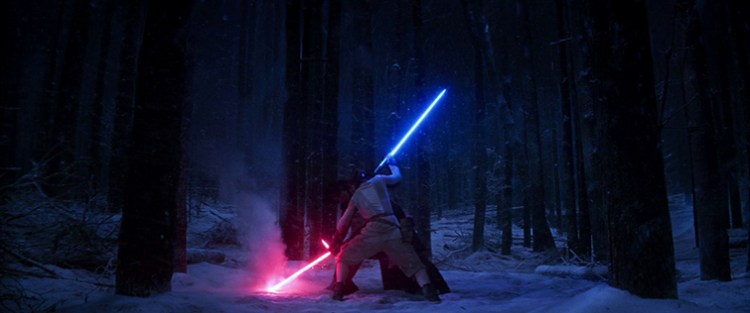
The Force Awakens was a breath of fresh air once we finally returned to the Star Wars universe, ten years after the prequels. J.J. Abrams made it a point to acknowledge and act upon audiences’ disdain for CGI-heavy Star Wars films.
Instead, we got real humans wearing real costumes, be they aliens or storm troopers. The sets were just that . . . sets. Although blue screen was obviously necessary in some scenes, bringing the franchise back to its roots helped audiences feel like they were watching a Star Wars film again. A personal favorite moment from the film: Rey and Kylo lightsaber duel in the forest at night. The practical lights used for the blue and red spill worked like a charm.
7. The Phantom Menace
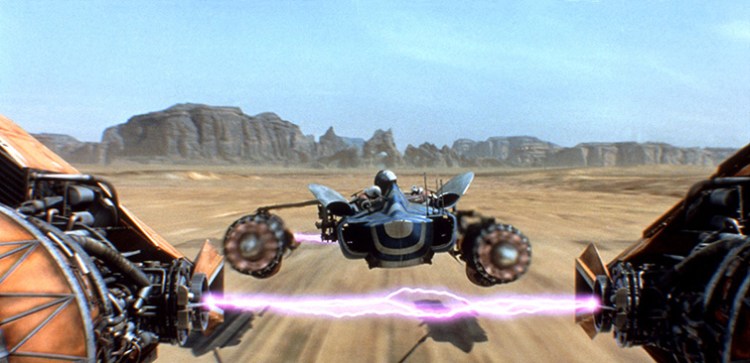
While sitting in the theater in 1999, regardless of your age, watching the pod racing scene for the first time was an absolute blast. The visual effects mixed with the sound mixing and editing on surround sound blew most audiences away at the time, myself included. Lucas enlisted the VFX supervisor behind Hook, John Knoll, who actually ended up being the VFX supervisor on Rogue One, to tackle the insane task of bringing Star Wars back to the big screen with new tech. This also led to the VFX team projection mapping some environments, a technique that had not been used before, especially to this level of precision.
Time, however, has not been kind to most aspects of the film. Jar Jar is objectively super rough to look at. At the time, though, having a completely CGI central character was unheard of. Some people bought into it; most didn’t. But, I think we can all agree on the fact that most of the fully-CGI characters in the film are distracting and don’t really need to be there. We now know this. Yes the production and post-production were rushed, but somehow with the pod racing scene and the last showdown between Darth Maul, Qui-Gon Jinn, and Obi-Wan, The Phantom Menace has several incredible sequences worthy of praise, even though there is also plenty to cringe at.
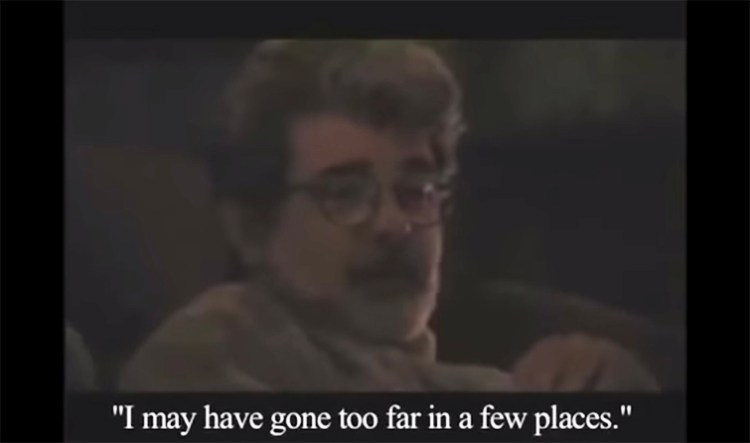
8. The Last Jedi
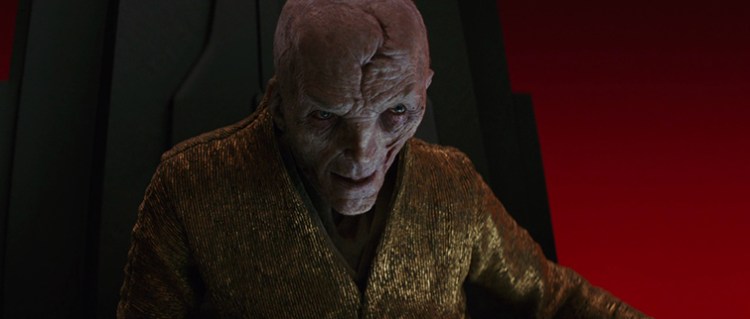
The horses. Those dang horses, and the chase sequence on Canto Bight (I had to look that up). For the most part, The Last Jedi has some pretty cool visuals, like Andy Serkis’s motion capture performance for Snoke, and the absolutely stunning image of a ship hyperspacing through a star destroyer. However, it seemed like there were several moments of the film slipping back into unnecessary CGI and unbelievability, like the horses, or BB8 controlling an AT-ST. Again, it’s not so much the idea of using CGI, it’s about using it to drive entire sequences that wouldn’t be possible without it. They’re meant to amplify practical effects, not drive the plot. The last sequence on Crait with the red salt is cool, and the methods they used to blend elements is worth noting. But the crystal foxes, porgs, and frozen Leia flying in space knock this one down to the number 8 spot.
9. Revenge of the Sith
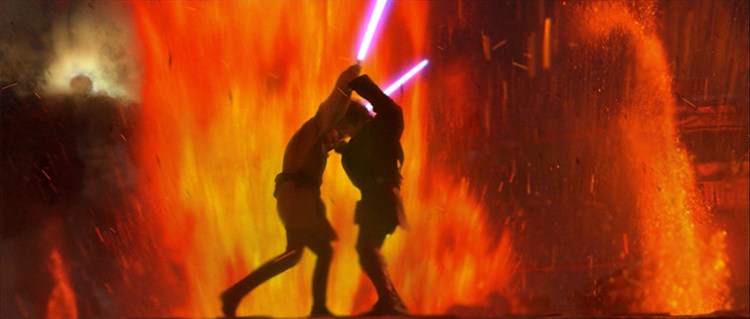
There’s a lot to love about Revenge of the Sith. The wookiee battle on Kashyyyk, the scope of the whole Republic collapsing, the memes — a lot to love. However, there’s no forgiving some of the characters and artistic decisions. One of the film’s brief villains is entirely CGI with no character trait other than “I am bad,” so the full CGI-ness doesn’t help us care. But, in many ways, a lot of the CGI in the film actually works. The last battle is very intense and engaging, even though it’s almost entirely blue-screened. By 2005, John Knoll, who was still working on the films, had pulled out all the stops.
Fun fact about Revenge of the Sith: it’s the only Star Wars movie that hasn’t been nominated for a Best Visual Effects Oscar. However, our last place definitely was nominated.
10. Attack of the Clones
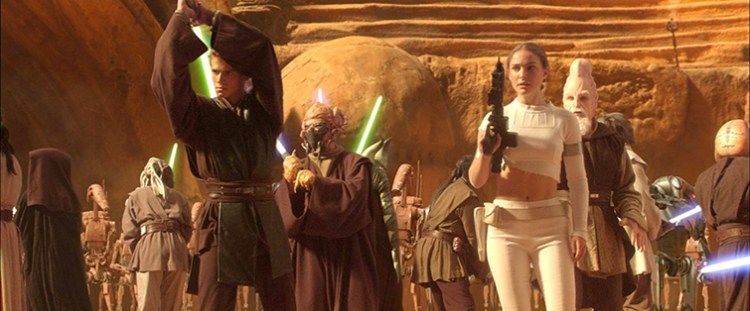
Obviously this was going to be last for several reasons. Reason number one: Anakin riding a cow/horse thing in a meadow looks absurd. And moving right along the arena battle on Geonosis is at times pretty rough to look at. Overall, the blend of CGI with practical effects (there are few) is pretty wonky. Lucas relied heavily on still relatively new CGI capabilities and ran with it. Yoda is entirely CGI, which is as jarring as it sounds when looking back.
However, it’s still a Star Wars film, so there are things worth loving. For example, this shot during the battle of Geonosis that is still one of the coolest Star Wars shots ever put on film. Attack of the Clones is not as bad as you remember, but it’s still pretty bad.
Now that I’ve finished writing this list, I already disagree with myself on a lot of them, so feel free to be honest and tell me why I’m total garbage. I’ll probably be right with you thinking the same thing. For now, I’m going to keep watching The Mandalorian and enjoying these baby Yoda memes. Star Wars forever.
All images via Lucasfilm Ltd.
Looking for more on the film and television industry? Check out these articles.





